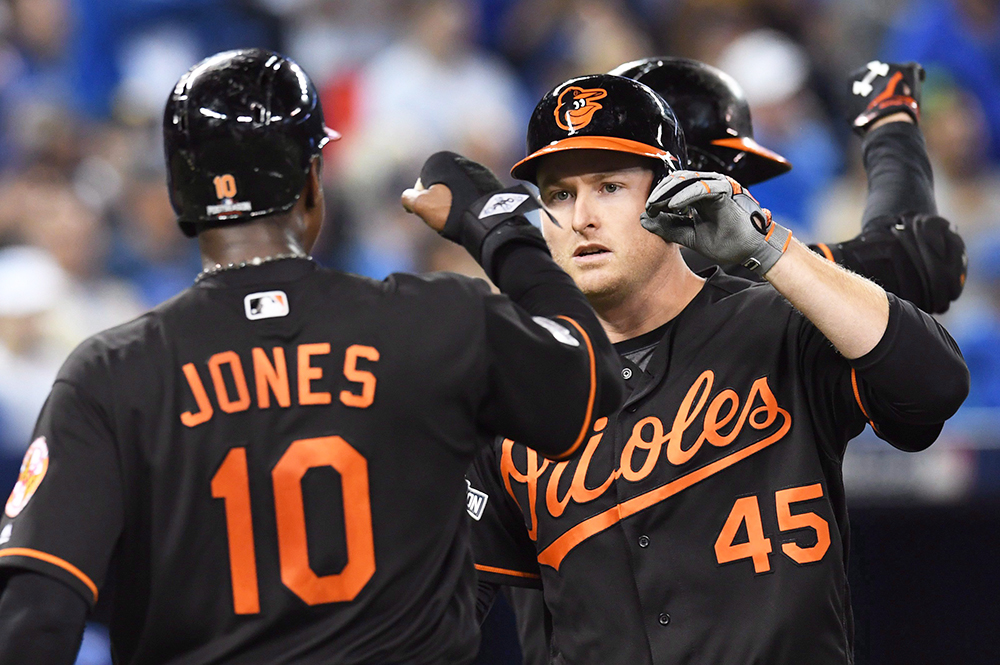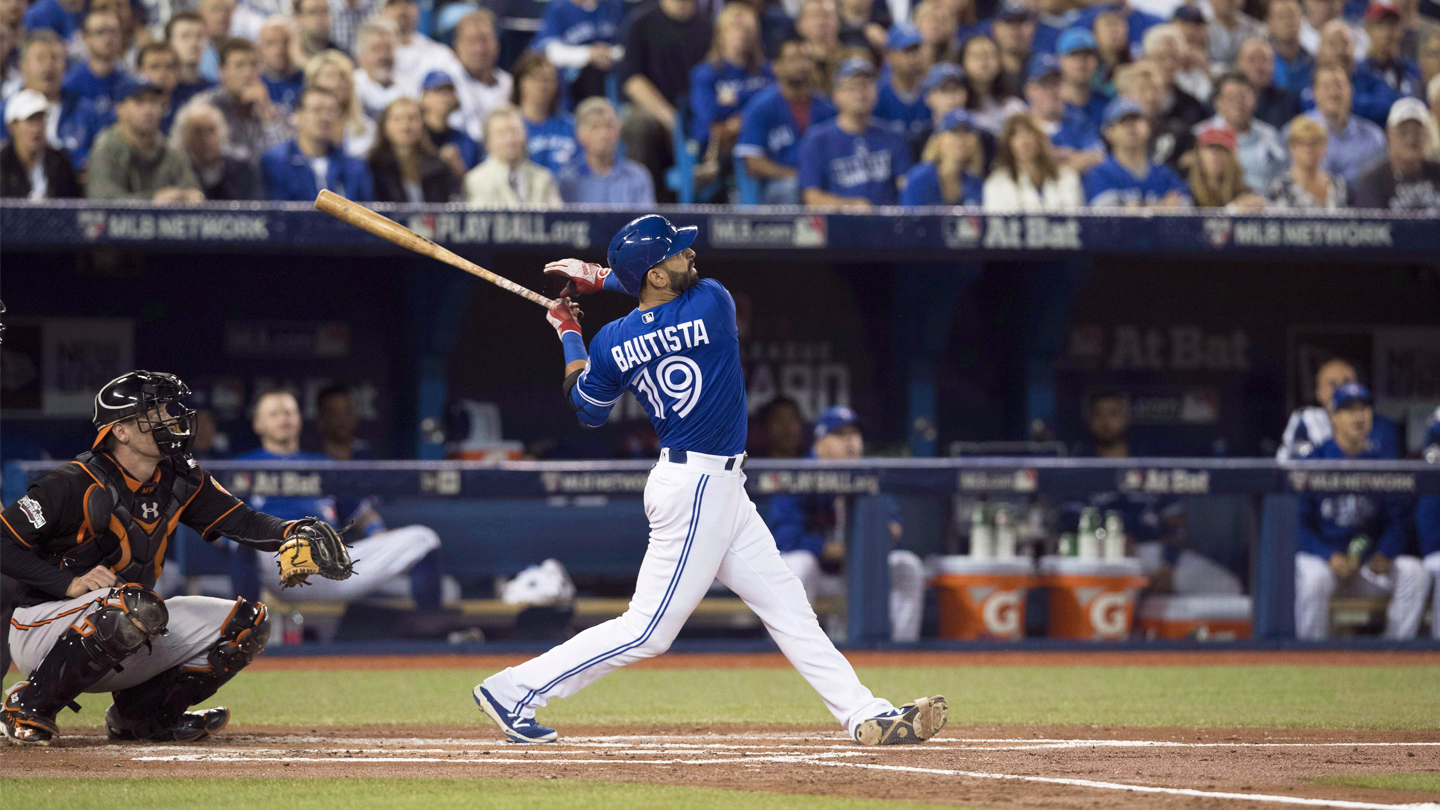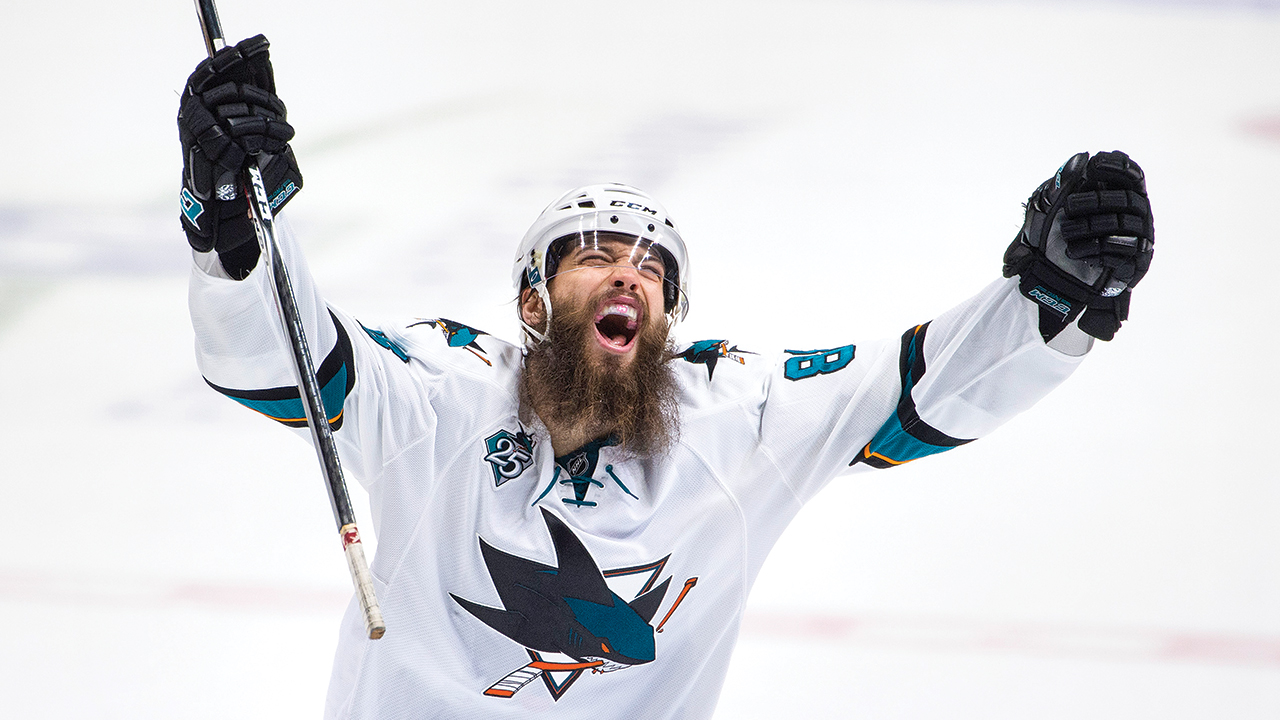By Shi Davidi and Ben Nicholson-Smith
In a brilliant 1998 Nike commercial, Greg Maddux famously proclaimed that “Chicks dig the long ball.” The ad, which featured Maddux and fellow Cy Young-winner Tom Glavine training to hit for power in a Rocky-style montage, was a joke, of course. But for years Maddux’s statement about the appeal of the home run did seem to ring true—it just applied more to baseball executives than women.
Ever since the power boom of the mid-‘90s, the surest way for a player to guarantee himself free-agent riches has been to hit bunches of dingers in his walk year. Eight of the 10 richest contracts ever handed out by MLB teams have gone to players with big-time pop. And with teams falling over themselves to bid for instant offence, even flawed sluggers have gotten paid, as Ryan Howard ($125 million over five years), Prince Fielder ($214 million over nine years) and Adam Dunn ($56 million over four years) can all attest.
But juxtapose more than two decades of long-ball loving contracts against what’s transpired so far in this strange off-season. Jose Bautista, Mark Trumbo and Mike Napoli are languishing on the open market. Chris Carter was non-tendered after a 41-homer season. Even Edwin Encarnacion obtained less than expected, signing a three-year, $60-million deal in December.
Sure, reluctant teams can point to some sort of reservation about each player. But the longer Trumbo, last season’s American League home-run leader (with 47), and Carter, the National League’s co-leader, sit around without contracts, the more some in the industry wonder why.
Could there be something larger at play this off-season? Could the comparative value of baseball skills be evolving? And as a result of that evolution, have MLB executives stopped digging the long ball?
“Is it home runs [changing in value], or is it defence, too—run prevention—and different ways to score runs?” asks Toronto Blue Jays general manager Ross Atkins. “Probably it has a lot do with the industry getting better at understanding defence and understanding a total player. Home runs are obviously very attractive for good reason. And maybe they were overvalued for a while. Maybe.”
An influential player agent, who asked not to be named, dismisses that notion entirely.
“We elected a rodeo clown for president yet owners think fans will care about the nuance of WAR?” counters the agent. “Fans want homers, fist pumps, walk-offs, closers throwing 100, neon arm sleeves, and their team to play in games that count. Nobody buys jerseys that say ‘[Andrew] Friedman,’ ‘[Theo] Epstein’ or ‘[Mark] Shapiro’ on the back. They want heroes and role models. Good guys and bad guys. Fans don’t pay $750 a pop for dugout club seats hoping to see five walks that night. They want to see their favourite hitter go deep and whether or not he pimps it.”
That all may be true, but at the very least, there are a new set of complicating factors for sluggers seeking big paydays.

Gord Ash, former Blue Jays general manager and current vice-president of baseball projects for the Milwaukee Brewers, has four decades of experience in baseball’s front offices and has watched firsthand as the game has transformed on the business end.
“There was a slogan in the industry, especially in the arbitration setting, that ‘power pays,’” Ash says. “Clearly it was an attractive element, but what we’ve learned through the years is that there’s power and there’s productive power—and they’re not the same thing.”
Carter is a prime example on that front. The Brewers non-tendered the 29-year-old in December to avoid paying him a projected $8.1 million in arbitration. That decision would have been unthinkable a decade ago, and highly unlikely even five years back. But in addition to his 41 homers and .821 OPS, Carter also struck out 206 times in 549 at-bats—a whopping 37.5 percent of the time—and generated just 0.9 wins above replacement.
In the end, the productivity of Carter’s power was limited, so the Brewers let him go, instead handing a $16-million, three-year deal to free agent Eric Thames.
“I wasn’t a part of that decision, but just thinking along with [the front office] it’s a read on what was available in the marketplace,” says Ash. “Why would we pay the kind of money we’re going to pay through the arbitration process when there’s certainly a number of choices at that position?”
That’s fair, but an argument can still be made that Carter is more of a known commodity, with seasons of 41, 37, 29 and 24 home runs in the majors. That sort of track record, even with Carter’s accompanying flaws, used to be valued more.
But league-wide home runs are easier to come by these days, a shift that may partially explain the diminished appeal of power bats. Last year, MLB hitters combined for 5610 homers, more than any year in baseball history except 2000—the height of MLB’s steroid era. While nobody exceeded Trumbo’s 47 homers in 2016, 111 players hit 20 or more, an average of nearly four per team. If Ryan Schimpf, Eugenio Suarez and Freddy Galvis are all 20-homer hitters (they are, believe it or not), then spending big bucks for someone who hits 30 may not be the no-brainer it once was.
“I don’t know that power is valued any less,” says one team executive, who asked not to be named. “Just that the skillset often comes with defensive limitations and those are now priced into the market in a way they haven’t been before.”
Statcast and other data streams have made assessments of players’ gloves much more reliable in recent years. Where front office execs may once have doubted defensive stats, they can now trust them.
That transition’s been especially apparent behind the plate. It took years for teams to really trust catcher-framing data, but now that they do, the market for backstops has changed demonstrably.
When Russell Martin obtained an $82-million guarantee in 2014, it seemed like a tacit endorsement of the value of pitch framing. Still, Martin would have been paid regardless given his on-base skills and power. But when Francisco Cervelli (who’s hit 18 home runs over nine MLB seasons) and Jason Castro (owner of a .309 career on-base percentage) got paid in 2016, it became impossible to deny that elite framers are better positioned than ever. One agent, who spoke on the condition of anonymity, estimated that Castro would have signed for something like $5 million on a one-year deal if numbers showed him to be a below-average framer. Instead, the Twins signed him for $24.5 million over three years.
“I’ve certainly observed and witnessed that the impact of catchers who commit to [the defensive] side of the game … has an exponentially positive effect on the pitching staff,” Minnesota’s chief baseball officer, Derek Falvey, told reporters after signing Castro.
In other words, it’s great to hit home runs, but run prevention matters just as much as run scoring. And while that perspective might have been cutting edge a decade ago, it’s now widespread enough to shift the market.
“You’re factoring in the complete player in a more comprehensive way and that’s based on historical information,” says Atkins. “It seems like the industry is doing that in a more consistent way.”

Baseball’s decades-old arbitration system also plays a role in obscuring this relatively new appreciation for defence. In fact, the realization that home runs alone don’t necessarily lead to massive paydays can be jarring for players because of how the arbitration system’s structured. Before they hit free agency, players have three or four years of arbitration eligibility, where power and playing time pay better than anything else.
Relatively speaking, defence doesn’t matter in arbitration. Cervelli, who recently obtained a $31 million contract from the Pirates, didn’t earn more than $1 million until his third trip through arbitration, despite his impressive defensive abilities. The likes of Fielder and Howard, on the other hand, would set records in arbitration regardless of how well they fielded.
As teams value defence more, the arbitration and free agent markets have become increasingly distinct. Adding to the contrast, arbitration-eligible players get paid for what they’ve done in the past. In free agency, it’s just the opposite.

Another factor potentially cooling the market for power this off-season is the age of the available bats. Encarnacion, Bautista and Napoli are all in their mid-30s, and age tends to be penalized by today’s analytics.
When Ash was general manager of the Blue Jays—from 1995 to 2001—discussions on free agents were primarily scouting-oriented rather than statistically driven, and decisions were more obviously subjective. “There was no formula, there was no algorithm,” Ash admits.
“It was experience and your ability and scouts’ ability to read a player’s physical ability, his mental capabilities, how dedicated he was,” he continues. “Now it’s easier because there are clearly models in play that tell you what you should expect over the next several years.”
Today’s models are able to compare players with similar workloads, experience, body types and career trajectories to better inform decision-making. The likelihood when signing a player in his 30s, particularly in his mid- or late 30s, is that a team is buying decline, which has made it harder for many veterans to get multi-year deals.
Still, the effects of time are far from uniform. A 32-year-old with 1,000 games played could be more physically vulnerable than a 36-year-old who has played the same number of games. With pitchers, innings logged can be a more dependable predictor of future health than age alone, and Ash believes such discrepancies are “one of the weaknesses” in various analytical models.
“You have to be careful with it,” he says. “Even in veteran players, you can see guys that take tremendous care of themselves and are still physically attractive in terms of their health going forward, and there are other guys that are ticking time bombs.”
The solution, Ash says, combines old-school scouting with the analytical model to try and develop a more complete picture.
“The Cubs do this, they don’t talk much about it, but they do this—they clearly have a model, but they also use subjective scouting evaluations. That’s really the best way to be successful.”

Overseeing all of this are baseball’s owners, those responsible for writing the cheques. Select powerful agents, such as Scott Boras, still have pipelines directly to team owners or senior executives, allowing them to peddle their players over the heads of the GMs who manage risk for a living. And other times, there can be pressure from higher-ups to make moves for business or public-relations reasons. But another changing aspect of contract negotiations is that fewer owners seem to be pushing specific player moves on their front offices.
“This one is difficult to talk about but I believe it to be true,” says Ash. “There were owners that would wake up on the dawn of free agency and say, ‘Hey, I really like this guy, let’s sign him,’ based on nothing other than [the value they placed] in that player as a fan. That did play a role in the game and in certain particular cases, it still does. [But] I think it’s much rarer now.”
Plus, ever-expanding front offices insulate owners from the players and agents looking for big paydays.
“Owners know they are their worst enemies,” one player agent says, “so they let the front office work.”
With all of that said, there’s still nothing better than a home run. It’s just that in the ongoing evolution of baseball players, there’s increased awareness that homers are a means to an end—outscoring the opposition—and not the end itself. As compensation for defensive players increases, pure sluggers may get paid a little less. Similarly, as baseball’s talent pool gets younger, there’s less of an impetus to sign sluggers to long-term deals. Mix in the abundance of 20-homer power bats and owners’ willingness to sit back and let their baseball minds operate and you start to see how a team can pass on a player like Carter immediately after he leads the league in home runs.
So if Nike were to shoot an updated version of that iconic commercial today, it might feature a smiling Mike Trout saying something like this: “Chicks dig the long ball, the walk, and the defence in direct proportion to the runs each element scores or prevents.”
Not quite as catchy, but increasingly a reality for front offices and free agents alike.





